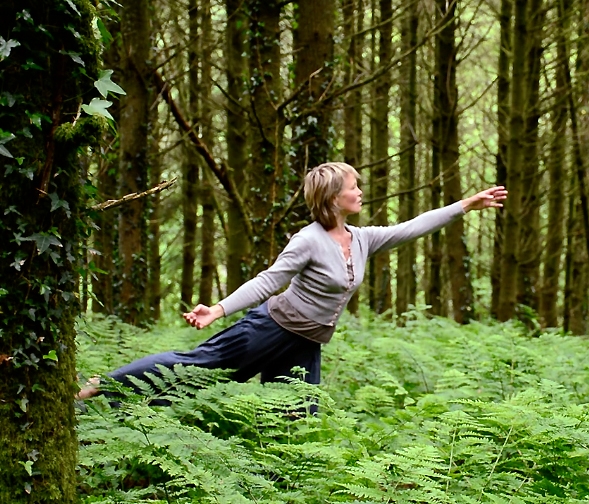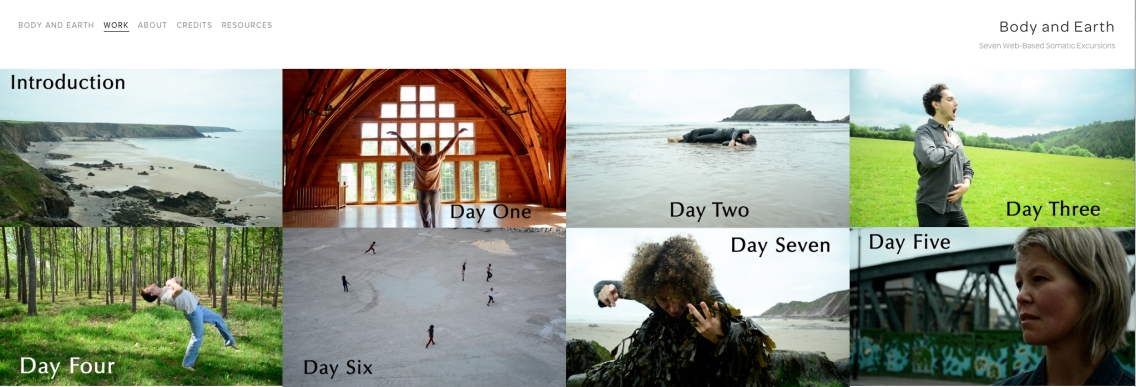Dance and the Digital Liberal Arts: Website Presents New Model for Movement Study

MIDDLEBURY, Vt. — Middlebury College Professor of Dance Andea Olsen’s work has long been rooted in physical space; deeply interested in the connection between the body and earth, the dancer and teacher has spent four decades touring, teaching and creating nature-based dances. Now, her work has migrated to an environment as ethereal as they come: the web.
In the first major project completed through Middlebury’s Digital Liberal Arts initiative, Olsen and her collaborators launched the “Body and Earth” website earlier this fall. The project includes seven short films, each focused on somatic exercises that span continents, moving from the fields and working quarries of rural Vermont to the urban interior of London and the beaches of Wales. The series of short films guide viewers through somatic exercises, intended, as Olsen writes in the introduction to the project, “for anyone with curiosity about living more consciously.”
“Technology is often thought of as being a barrier, the thing that separates us from the environment,” said Scotty Hardwig, a visiting assistant professor of dance and dance and digital media artist. Hardwig served as the project’s art director, videographer and sound designer, and he was particularly interested in exploring the idea that technology is “not a barrier, but a link.”

Olsen’s goal with the “Body and Earth” site is to remind viewers — who are encouraged to participate and move with the films acting as prompts — that bodies are made up of the same minerals, air and water that surround us. Dance and movement, Olsen writes, are “essential ways to experience this interconnectedness,” regardless of a viewer’s experience or training with the world of dance.
“My vision has always been that the body is our common language around the globe,” said Olsen.
Olsen is also the author, twice with collaborator Caryn McHose, of a trio of books about the body: The Place of Dance: A Somatic Guide to Dancing and Dance Making (2014); Body and Earth: An Experiential Guide (2002); and Bodystories: A Guide to Experiential Anatomy (2004). She had long been mulling over ways to translate her work from the page to a digital medium. When Middlebury announced its new Digital Liberal Arts initiative last year, she saw an opportunity to make those possibilities a reality.
Funded by a three-year, $800,000 grant from the Mellon Foundation, the DLA assists faculty who wish to expand their use of digital technology. “It’s an exciting way for scholars and creators to imagine their audiences in different ways,” said Jason Mittell, a professor of Film and Media Culture and American Studies, and the faculty director of the DLA.
The initiative also values and promotes collaboration across the disciplines — and the collaborative nature of Olsen’s work is part of what so appealed to the DLA team, said Mittell. Funding in hand — the Body and Earth project ultimately cost $9,000 — Olsen assembled her team. McHose, Hardwig and Olsen were joined by arts technology specialist Daniel Houghton, who served as producer. Associate professor of theatre Alex Draper lent his voice for some of the voice-over work. The company included twelve international performances, among them numerous Middlebury faculty, students and alumni.
With reporting by Kathryn Flagg ’08

